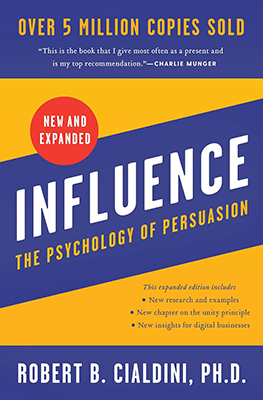Influence: The Psychology of Persuasion
“Influence: The Psychology of Persuasion” by Robert Cialdini is a classic book that explores the psychological principles behind persuasion and influence. Here’s a summary of its key points:
Reciprocity: Cialdini discusses the principle of reciprocity, which suggests that people feel obligated to return favors or concessions. He explains how giving something of value first can increase the likelihood of receiving something in return.
Commitment and Consistency: The book explores how people have a desire to act consistently with their past behavior and commitments. Cialdini discusses techniques for obtaining voluntary commitments from others and leveraging them to influence future behavior.
Social Proof: Cialdini delves into the concept of social proof, which suggests that people look to the actions and behaviors of others to guide their own decisions. He explains how testimonials, endorsements, and peer pressure can be used to influence behavior.
Authority: The book examines the power of authority in persuasion. Cialdini discusses how people are more likely to comply with requests from perceived experts or figures of authority and provides examples of how authority can be established and utilized.
Liking: Cialdini explores the importance of likability in persuasion. He explains how building rapport, finding common ground, and fostering positive relationships can increase the likelihood of influencing others.
Scarcity: The book discusses how the perceived scarcity of a product or opportunity can increase its value and desirability. Cialdini explains how creating a sense of urgency or exclusivity can be used to influence behavior.
Understanding Influence Tactics: Throughout the book, Cialdini provides real-world examples and case studies to illustrate how each principle of influence can be applied in various contexts, such as marketing, sales, and negotiation.
Ethical Considerations: Cialdini emphasizes the importance of using influence tactics ethically and responsibly. He cautions against manipulation and coercion and encourages readers to consider the long-term consequences of their persuasive efforts.
Overall, “Influence” offers a comprehensive overview of the psychology of persuasion, drawing on research from psychology, sociology, and marketing. By understanding the principles outlined in the book, readers can become more aware of the factors that influence their own behavior and the behavior of others, allowing them to make more informed decisions and navigate persuasive situations more effectively.

